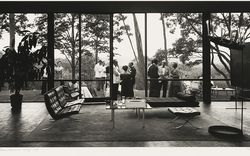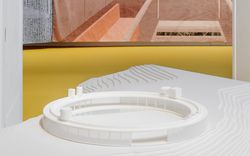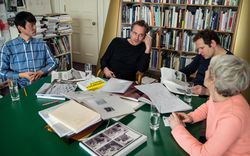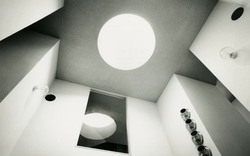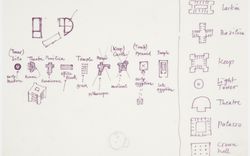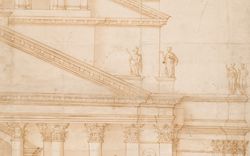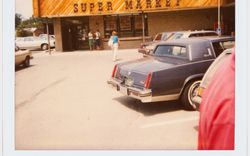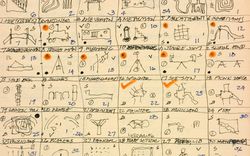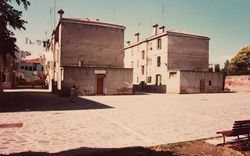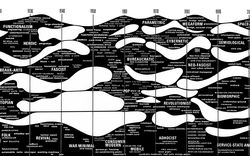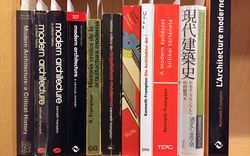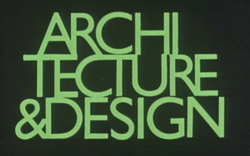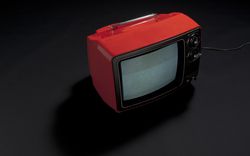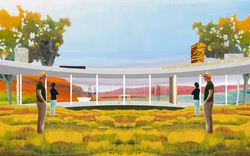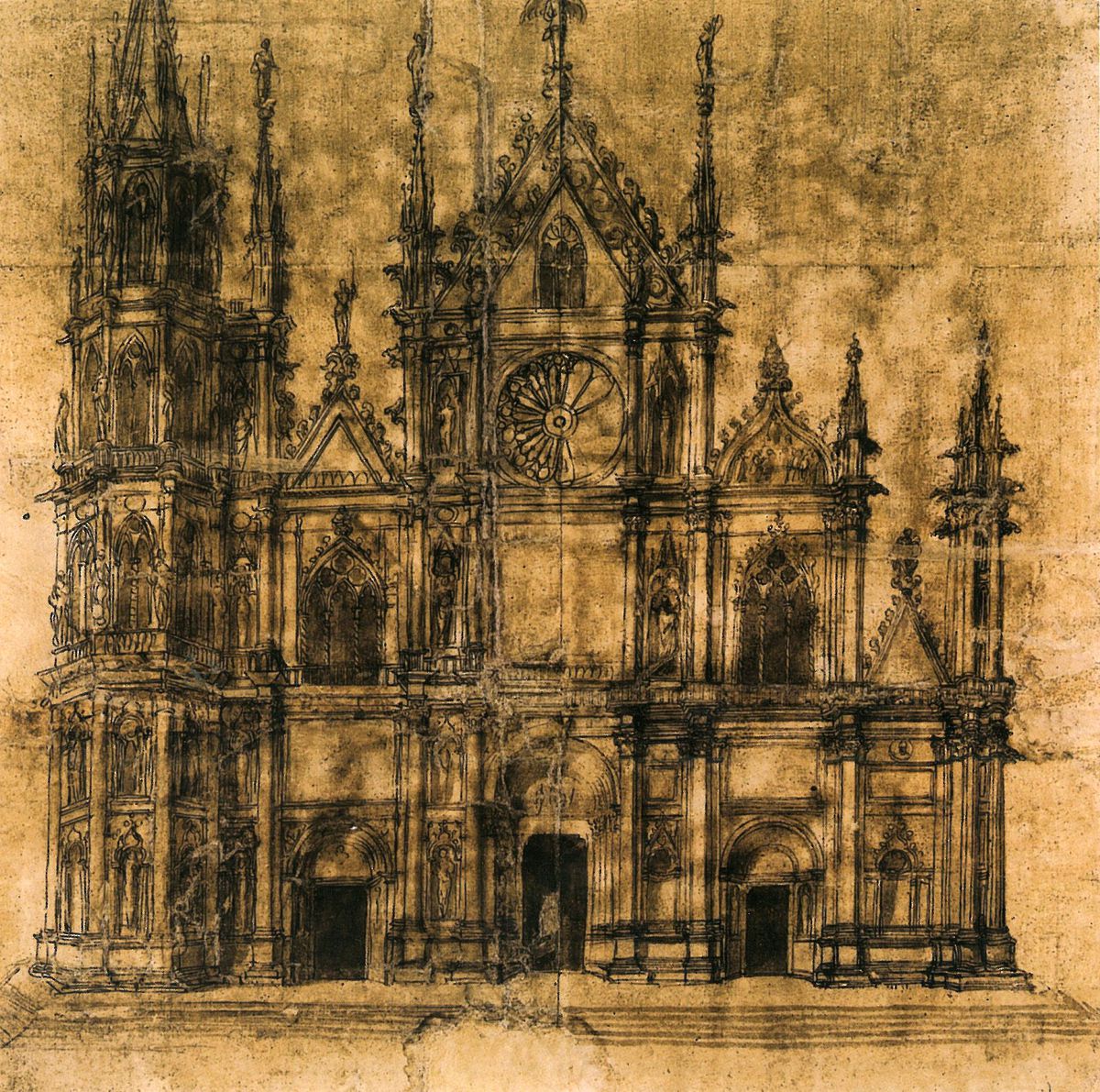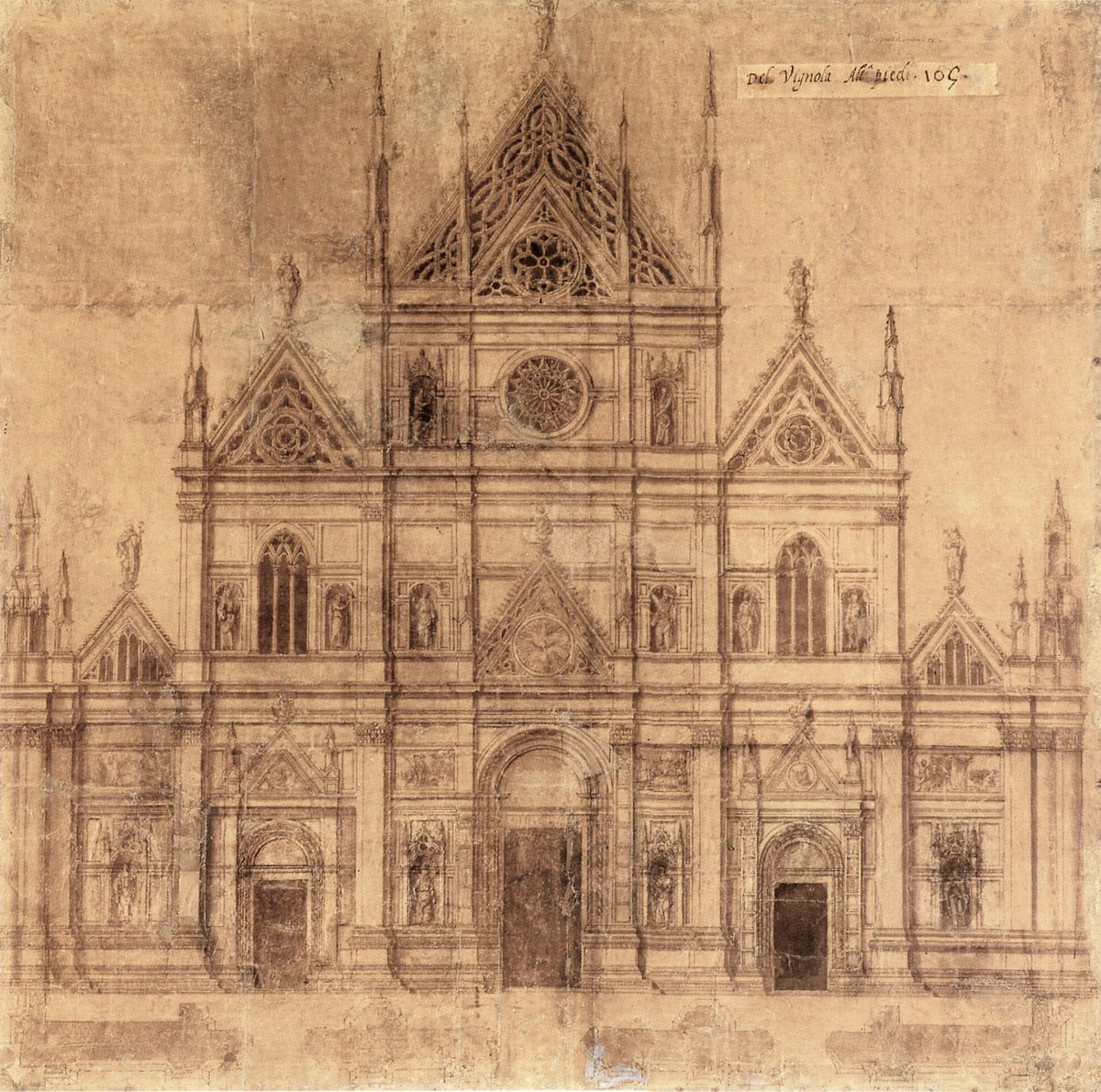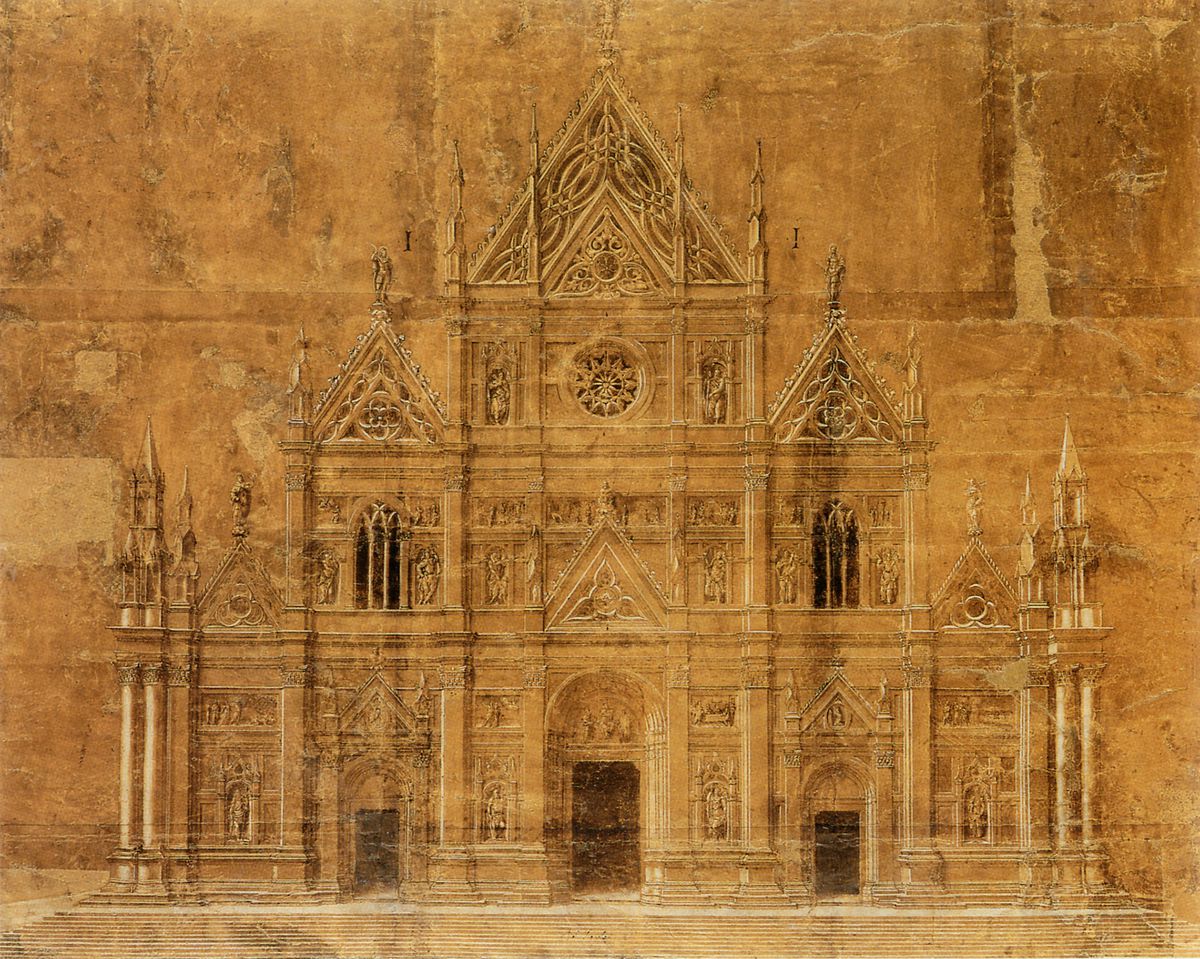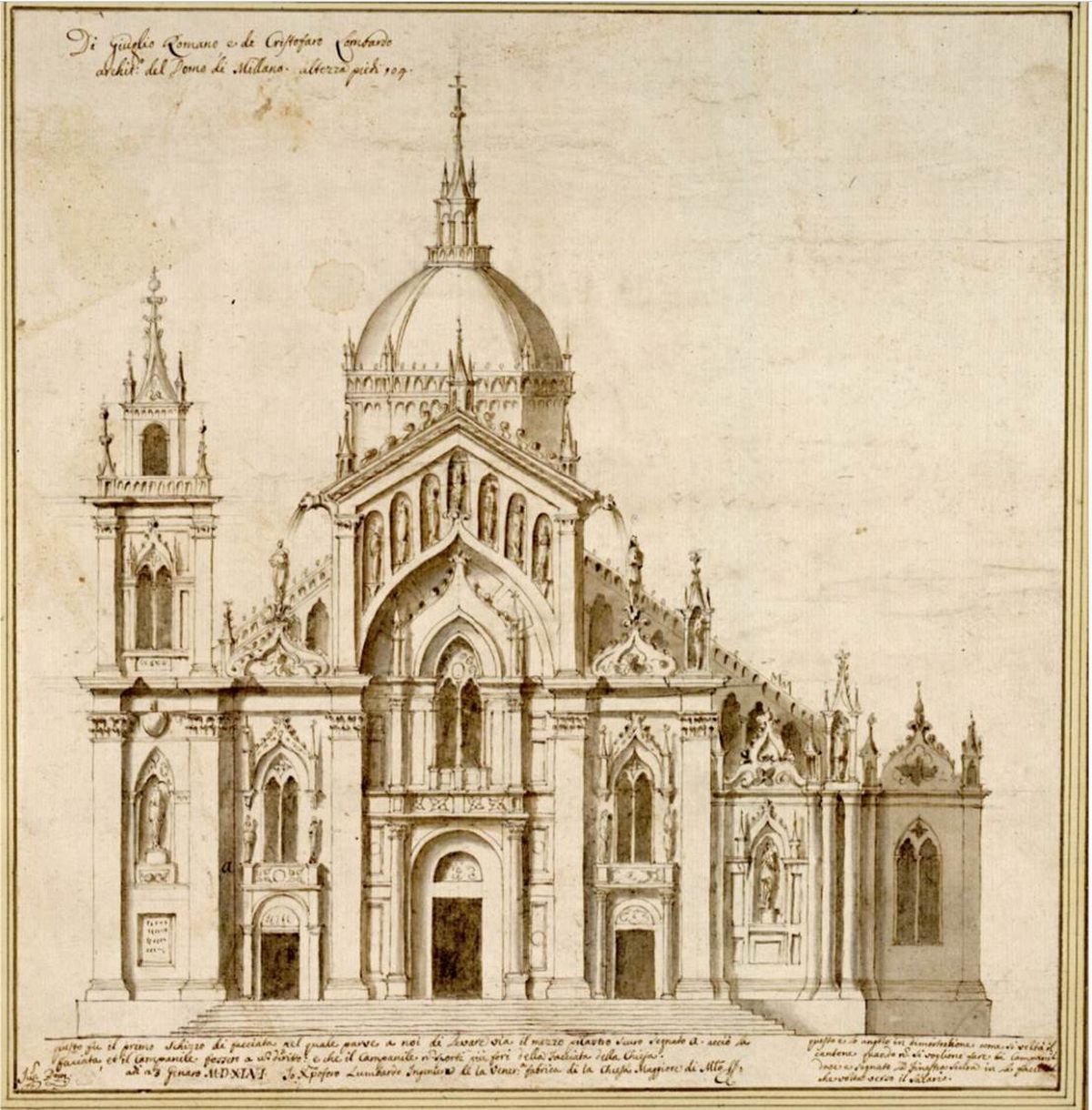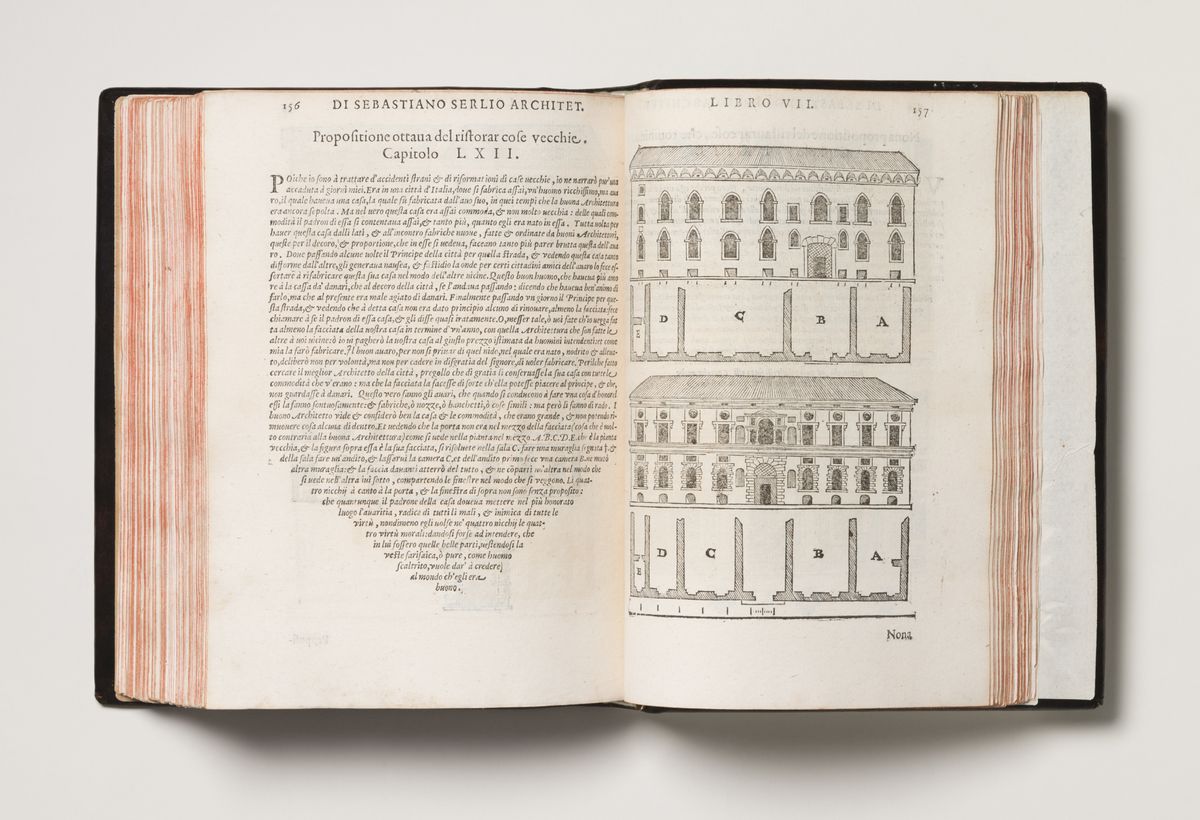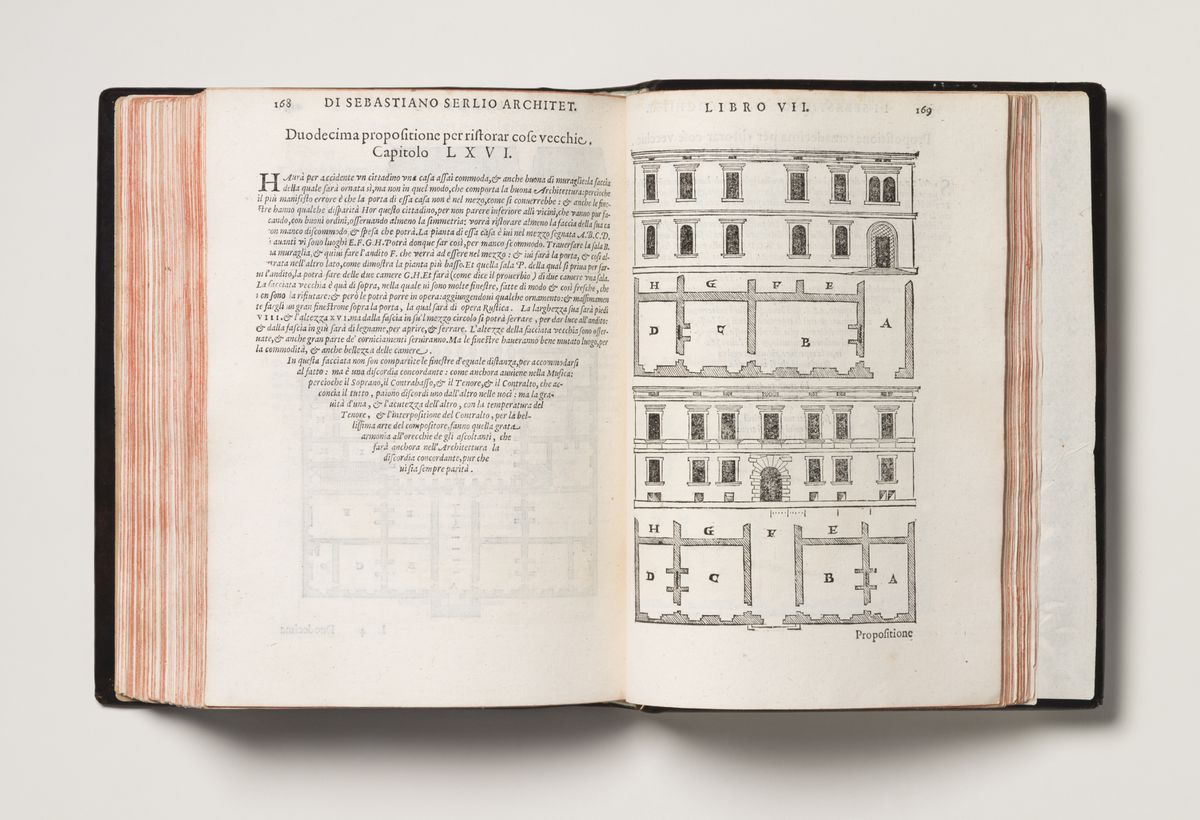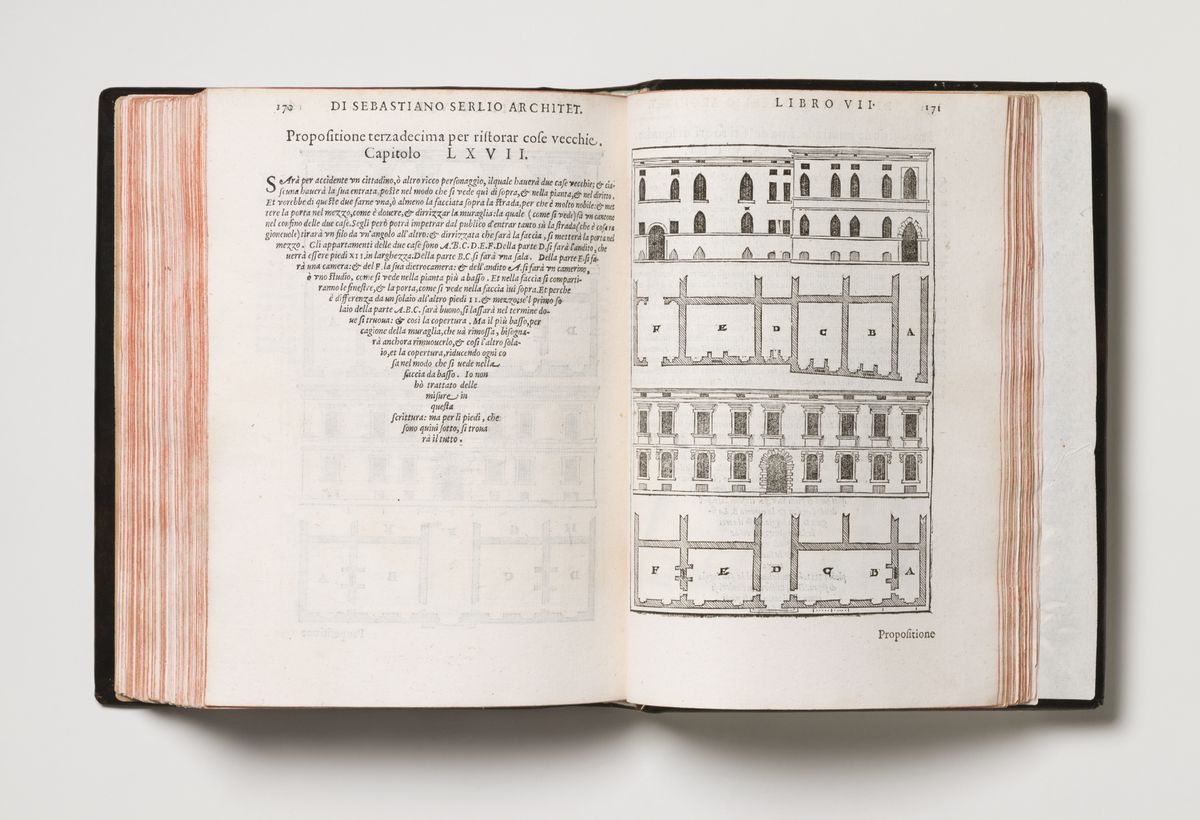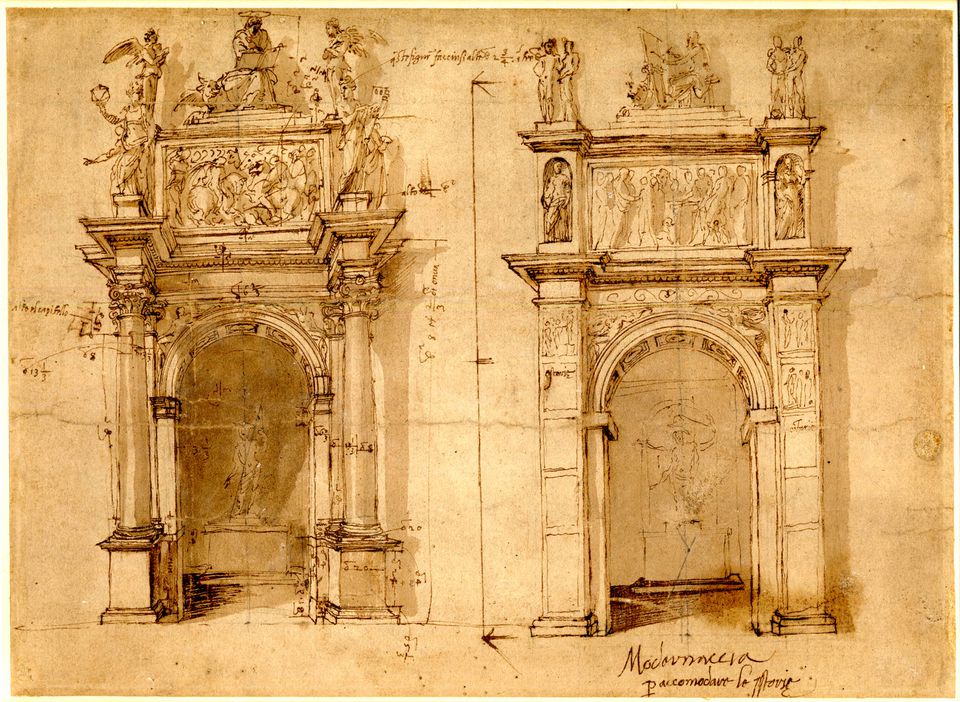What Was History for Patrons and Architects in Bologna in 1579?
Text by Guido Beltramini
Rome, 1535. Baldassare Peruzzi designed what was to be one of the most fascinating palaces of Renaissance Rome, the Palazzo Massimo alle Colonne. The palace is a response to the shape of the city; the facade is curved, rather than straight, because it is placed over and joins together the fronts of two pre-existing houses on the site. The architectural language is radically classical. The massive slab of the facade rests on six powerful Doric columns, forming a screen to the entrance portico of the palace. This marks the revival of the column as a structural element, whereas for Leon Battista Alberti it had mainly been a decorative element applied to the wall. Peruzzi’s sophisticated classicism continues in the entrance portal and the inner courtyard with a double loggia, which has Doric columns on the ground floor and Ionic columns on the first floor. They don’t support arches, but straight entablatures—this is an explicit archaeological citation of the classical. Twenty years earlier, Baldassarre Peruzzi had designed the facade of the church known as La Sagra in Carpi. He applied the front of an ancient temple to a Christian church, with the creation of tall pilasters supporting the upper pediment aligned with the central nave, and smaller pilasters supporting the visible parts of a lower pediment aligned with the aisles. This was an initial experiment, but it paved the way for Palladio’s later facades.
Born in Siena, Peruzzi trained in Rome with Bramante and Raphael. His student, Sebastiano Serlio, was to describe the classical language of architecture to the world in a series of architectural publications that met with considerable critical fortune. But Peruzzi’s design for the facade of the Basilica of San Petronio in Bologna was done in Gothic style. How could Raphael’s student—who had been appointed to continue the work begun by Bramante and Raphael on St. Peter’s Basilica in Rome—possibly have come up with this project?
Mantua, 1546. Raphael’s favourite student, Giulio Romano, had moved from Rome to Mantua in the 1520s, and consciously exported his master’s classical language to northern Italy. His was a sophisticated, creative classicism, rich in transgressions, but always keeping the classical syntax and vocabulary. So, ten years after Peruzzi, why did he too present a Gothic-style design for the Basilica of San Petronio?
Read more
Rome, 1562. Jacopo Barozzi da Vignola published his Regola delle cinque ordini d’architettura in Rome. The book was composed of thirty-two plates describing the features and methods used in designing the architectural orders. It was a key text for the language of classical architecture and would be reprinted over the centuries. A few years earlier, in 1556, Vignola built the imposing Villa Farnese at Caprarola. In 1559, he designed the Palazzo dei Banchi, in classical style, on the eastern side of the square in front of the Basilica of San Petronio. But Vignola also proposed two variants of a Gothic facade for San Petronio.
Vicenza, 1572. The way opened by Peruzzi’s La Sagra in Carpi reached a remarkable climax in Palladio’s facade of San Francesco della Vigna in Venice, completed in 1564. But eight years after San Francesco della Vigna, Palladio designed a bizarre, fantastic creature for San Petronio: a “Palladian” facade set on a medieval base.
Has everyone gone Gothic? What was going on? Didn’t they teach us that classicism is a strict system of rules? Weren’t Renaissance architects supposed to hate the architecture of the recent past? Didn’t Giorgio Vasari and Palladio write that the Gothic is ugly, graceless architecture? If we believe that the history of architecture was made by architects, Peruzzi, Giulio Romano, Vignola, and Palladio seem to have gone crazy. In the sixteenth century, like today, architects were not all-powerful designers but part of a complex interplay with political, economic, and even astrological dimensions. The events that mark the completion of the facade of the Basilica of San Petronio provide valuable insights into this interplay.
On the stage of San Petronio, many actors played their parts. Bologna was part of the Papal States and was governed by a cleric, the papal legate, who was accountable only to the pope. A lay senator was appointed by the pope as presidente perpetuo of the fabbrica, the office responsible for construction—he was head of the fabbrica for life. The chief architect of the fabbrica was always Bolognese, as were the stonemasons, and they consistently fought against outside pressures to adopt innovative projects. The pattern was always the same: each project was initially drafted by the fabbrica architect. It was assessed by external experts, who were invited to submit alternative projects. For example, a model by Arriguzzi, from about 1514, was compared to Peruzzi’s design, Domenico Aimo da Varignana’s 1518 project was compared to Vignola’s design in 1543, and Terribilia’s project was compared to Palladio’s. But very rarely did an outside project come to anything. Palladio was thus perhaps something of an exception.
Why did celebrity architects like Palladio take part in this game? Why was the appointment such a great honour for leading architects? In 1546, Giulio Romano received one hundred scudi for his work, and, in 1578, Palladio was paid one hundred gold ducats—almost the equivalent of two years of his salary as the architect of the Basilica of Vicenza. The appointment meant networking and further commissions—Peruzzi went on to design a palace, a chapel, and a portal—and even visibility in books. In 1572, for example, Martino Bassi published a book that brought together opinions on Milan’s cathedral by Bertani, Palladio, Vasari, and Vignola.
Palladio came onto the scene in Bologna in 1572. He was called in to assess the project by the new fabbrica architect, the Bolognese Francesco Morandi, known as Terribilia. Around 1571, Terribilia had drafted this project, which attempts to sum up both Varignana’s decorative logic and the structural consistency introduced by Peruzzi. Palladio was summoned by the presidente perpetuo to judge this particular project. After criticizing it, Palladio suggested collaborating with Terribilia. But he made a strategic mistake: he tried to please the patrons by keeping the lower part of the base and setting a kind of church all’antica on the upper level. Conceptually, Palladio considered what had already been constructed as a rusticated base on which to set a new facade. At first this seemed to be a winning strategy, so much so that he also submitted template drawings of the details. The stones were even acquired, but in November 1577, Palladio’s design was attacked by a group of architects and “men of design”—we don’t know their names. The presidente perpetuo reported their exact criticisms to Palladio, who responded analytically in a memorial. His vigorous defence was not entirely convincing: the criticisms highlighted the compromises, and Palladio probably ultimately agreed with his critics.
At this point, Palladio decided to break off his collaboration with Terribilia and to draft his own project. Initially, he retained the existing base, although this prevented him from using a giant major order, since it would have been disproportionate on the existing bases. He used three registers of columns and pillars that traced a well-defined scaffolding, with a good balance between horizontal and vertical members. This solution takes the urban context of the project into account: the levels of the superimposed orders were aligned with those of two other large buildings in the square: the loggias of the Palazzo dei Banchi, built by Vignola around 1565–1568, and the mid-fifteenth century Palazzo del Podestà.
There can be no doubt that Renaissance architects abruptly broke with the architecture of their recent past, with what Palladio called “an old-fashioned way of building without grace or beauty whatsoever.” For Giorgio Vasari, Gothic buildings were “monstrous and barbarous.” The new architecture proposed order where there had been disorder, beauty instead of confusion, principles instead of arbitrariness, and imitation of the best models instead of wild inventions. In a plate in his Seventh Book, Serlio shows how to convert a medieval facade into a well-ordered, symmetrical modern facade.
In a drawing held at the British Museum, Peruzzi shows a project for the facade of a chapel in Pisa cathedral: on the left he has drawn the solution he likes, inspired by the Arch of Titus, and on the right a “neo-Quattrocento” alternative without any real order. Under this right-hand drawing he wrote Modernaccia per accomodare le storia [Modern rubbish to accommodate the stories], that is, a badly made form, forced on him by the need to leave room for the bas-reliefs. But, regardless of Peruzzi’s feelings, in the case of San Petronio, the patrons had probably instructed him to keep the base.
But why was the fabbrica of San Petronio so keen on the existing base? Certainly because of costs: why demolish what had already been built? But even if the base could be demolished, structural concerns would arise: removing the stones from the cladding might undermine the whole structure. This problem was very clear to Palladio. Renaissance architects were well aware that the ancient buildings they loved were the product of history, of previous events. Peruzzi, for example, considered the pronaos of the Pantheon to be a later addition. And when Renaissance architects declared that the Baptistery in Florence was an ancient temple dedicated to Mars, they knew that what they saw was the result of transformations dating from the Middle Ages. Howard Burns has pointed out that the round building at the centre of the Ideal City of Urbino is probably an ideal reconstruction of the Baptistery of Florence, based on a coin, an aureus of Augustus that depicts a round temple dedicated to Mars Ultor. In the Renaissance, the concept of formal uniformity was more complicated than we might think.
In addition to these reasons, there are also ideological reasons. In the fifteenth and sixteenth centuries, there was a deep-rooted conviction that people’s origins not only contained their destiny, but were the key to their being. Leon Battista Alberti, the great humanist and architect, was a renowned astronomer, and an astrologer as well. The manuscript of his horoscope, written in his own hand, also includes other horoscopes, which Alberti wrote for illustrious personages, such as Piero di Cosimo de’ Medici, known as the Gouty, Lorenzo the Magnificent’s father.
But as you can read in De Re Aedificatoria, Alberti was convinced that not only people, but also “every place has its destiny”—individual buildings as well as entire cities. This depends on their birth, their origin. The city of Iolaus, founded by a nephew of the mighty Hercules, was always able to withstand sieges, while the Temple of Delphi, originally burned down by a son of Mars, was to burn down several times in subsequent centuries. For Renaissance man, therefore, the return to origins is per se a guarantee of revival and consolidation. That’s why there was a belief that a building had to be continued as it had been started, with no drastic modifications.
Palladio made his final design for the facade of San Petronio when he had lost patience and abandoned diplomacy. By this time he had decided to use the professional opportunity offered in Bologna as a pretext for his own studies on church facades. His design envisages applying a huge all’antica pediment to the church facade. The drawing in the CCA collection is not by Palladio, but by an assistant, who probably made it too hastily. Palladio also worked on it, however, and added some measurements in his own hand. This copy was made to be sent to Rome so that Pope Gregory XIII, Bolognese by birth, could express his opinion on Palladio’s project. The pope looked at it and said “no.” After Palladio’s unsuccessful design, work resumed on Varignana’s project in 1579. But then everything ground to a halt again.
The story of the Basilica of San Petronio shows that we can’t write the history of architecture as a history of architectural forms, types, and structural formulas. By ignoring contexts, minds, and economics, we would be sidetracked. The history of architecture is a humanistic discipline concerned not with writing the history of things, but with the people who made those things.
One of the greatest twentieth-century historians, Marc Bloch, spent the last years of his life as a partisan fighting the Nazis in France. He was sentenced to death and shot on 16 June 1944. While in hiding, he had no books and so he wrote a wonderful essay of reflections, The Historian’s Craft, published in English in 1952. The principal question in the book is What is history for? or What purpose does history serve? The answer is: “None. History that serves a purpose is a history that is a servant to that purpose.” History is sometimes simply seen by architects as a stockroom or a catalogue from which to choose solutions for decorative or structural requirements. But this relationship with history cuts away all the bonds between forms and time. If you ask me what purpose the history of architects serves, I would reply that it does not aim to provide solutions for the present but to highlight the present’s distance from the past. I believe that the practice of a historian is the constant measurement of distance. History does not tell us what we are, but rather tells us something of what we are not. It tells us how an experience of space corresponds to an experience of the world, to social practices, and to a metaphysics that is unconscious but nonetheless crucial.
But saying that history is the measuring of distance does not mean that history says nothing about the present. History casts light on the modes and structures that shaped societies and the lives of individuals in the past, and shows us that our experience of the world is just one experience of it—the result of thoughts, intuitions, and prejudices. The history of architecture addresses the relationships between spaces, buildings, urban geometries, and social practices and therefore the forms of life of which those spaces, those buildings, and those geometries are the physical result. We must study the architecture of the distant past without modernizing it and without proposing it as a formal model for today. We must explore the past using the tools of accurate historical reconstruction, with a careful eye to context, which is indispensable in trying to understand a world that is distant and faded. However, we can nonetheless look to history to explore the origins of themes and concepts found in the architecture of today, in order to create a cultural platform for the architecture of tomorrow.
This text is adapted from a lecture given by Guido Beltramini at the CCA in 2017, in the context of our exhibition Besides, History: Go Hasegawa, Kersten Geers, David Van Severen.
